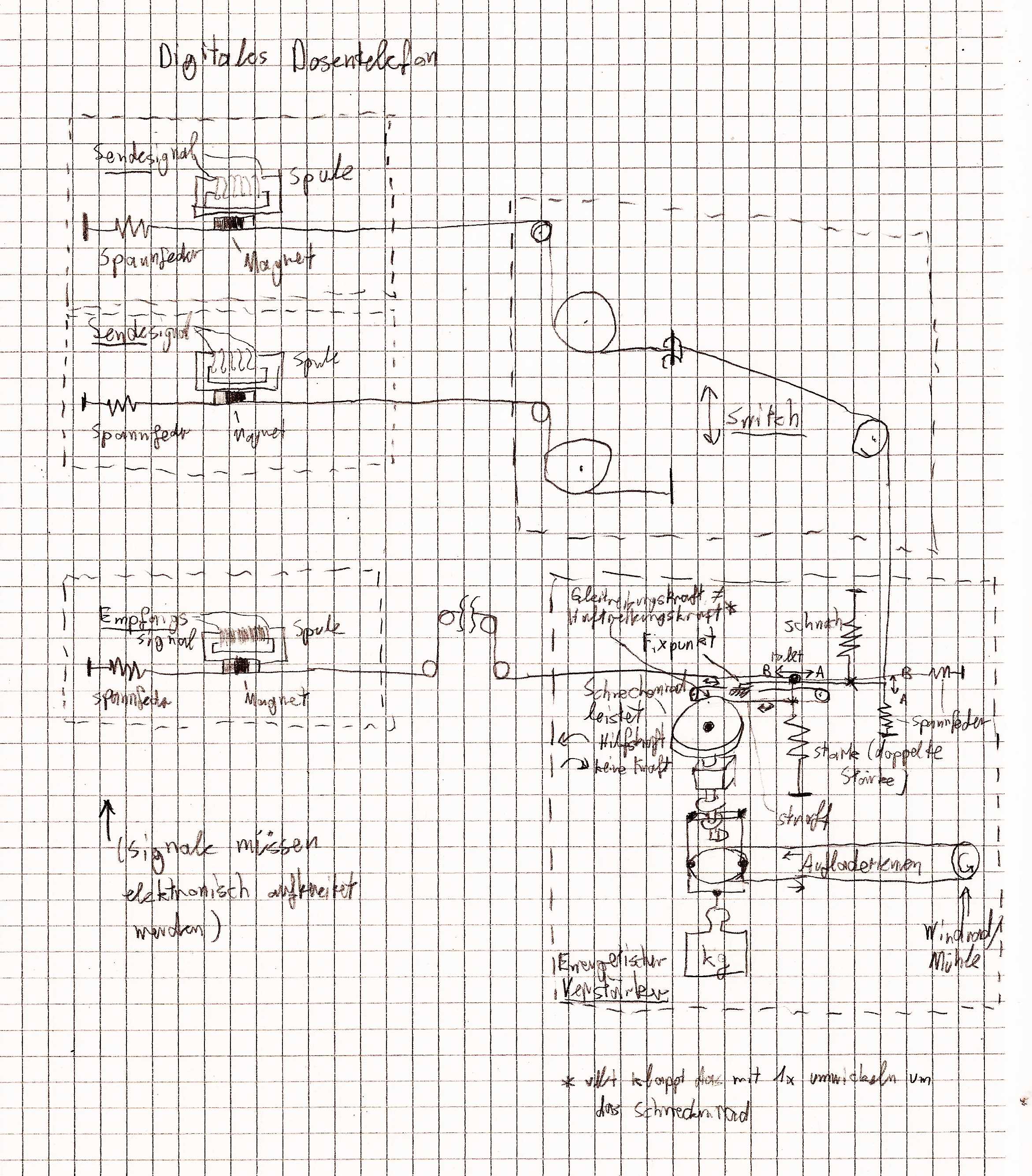
Als in einer Telefonkonferenz kurz das Dosentelefon angesprochen wurde, habe ich mir überlegt, was eigentlich den Dosentelefonen fehlt. Ich bin darauf gekommen, dass das Problem wohl die Ecken und die begrenzte Drahtlänge sind.
1. Einen diagonalen Knoten von der Ecke weg flechten.
2. Draht 1x um einen Nagel wickeln. (Große umlenkrollen sind vmtl. keine gute Option, da sie viel Masse bedeuten, was in der Bahntechnik "rolling masses" genannt wird und in die Bremshindernisse gezählt wird.)
Die Drahtlänge könnte man vllt. mit einem mechanischen Verstärker vergrößern. Mir ist aber keine direkte Technik dafür eingefallen, bis auf ein Schneckengewinde (alternativ auch sonstige Zahnradkonstruktionen), welches von einem Gewicht in eine Richtung gedrängt wird (und das Gewicht bewegt sich immer in dieser Situation Richtung Erdmittelpunkt). In die andere Richtung wirkt eine ziehende Federkonstruktion (das Gewicht bewegt sich dann nicht). Das Problem, was ich noch nicht wirklich lösen konnte, ist dass die Schwingung "auf der Stelle" ist, während das Gewicht einen dauerhaften Fadenvortrieb bewirkt. Ein Lösungsansatz wäre die Nutzung der Haftreibungskraft in Gewichtrichtung und der Gleitreibungskraft in Federrichtung (also weg vom Gewicht). Der Übergang zwischen den Kraftsorten ist allerdings so "kantig", dass Analogübertragungen wohl nicht so funktionieren werden. Digitale Übertragungen könnten klappen.
Es kann also sein, kann aber auch nicht sein, dass der folgende Aufbau funktioniert:

When in a phone (video) conference the discussion came to can phones, I thought, what actually is missing for the broad use of can phones. I guess it's about getting around corners and the not-too-far possible distance.
1. A diagonal knot from the corner.
2. Twist the wire 1x around a nail (big diverter pulleys seem to be no good option as they mean lots of mass, what you call "rolling masses" in train technology and counts to the breaking inhibiting factors).
The length of the wire possibly could be increased by a mechanical amplifier. I didn't find an actial technique for this, but a screw flight (or maybe different gear construction), which gets pulled in one direction by a mass (the mass then moves to the center of the earth). To the opposite direction the wire (signal) is pulled by a spring (when wire is moving, mass stays still).
The problem I couldn't solve so far is that the signal just happens in one place of the wire (there's no drift), whereas the mass would make the wire advance permanently. One approach could be to use the static friction (stiction) for movements in direction of the mass and the kinetic friction in direction of the spring (so away from mass). But the transition is "edged" so analogue transmission most likely won't work. Maybe digital transmission could work.
So following setting may or may not work:
